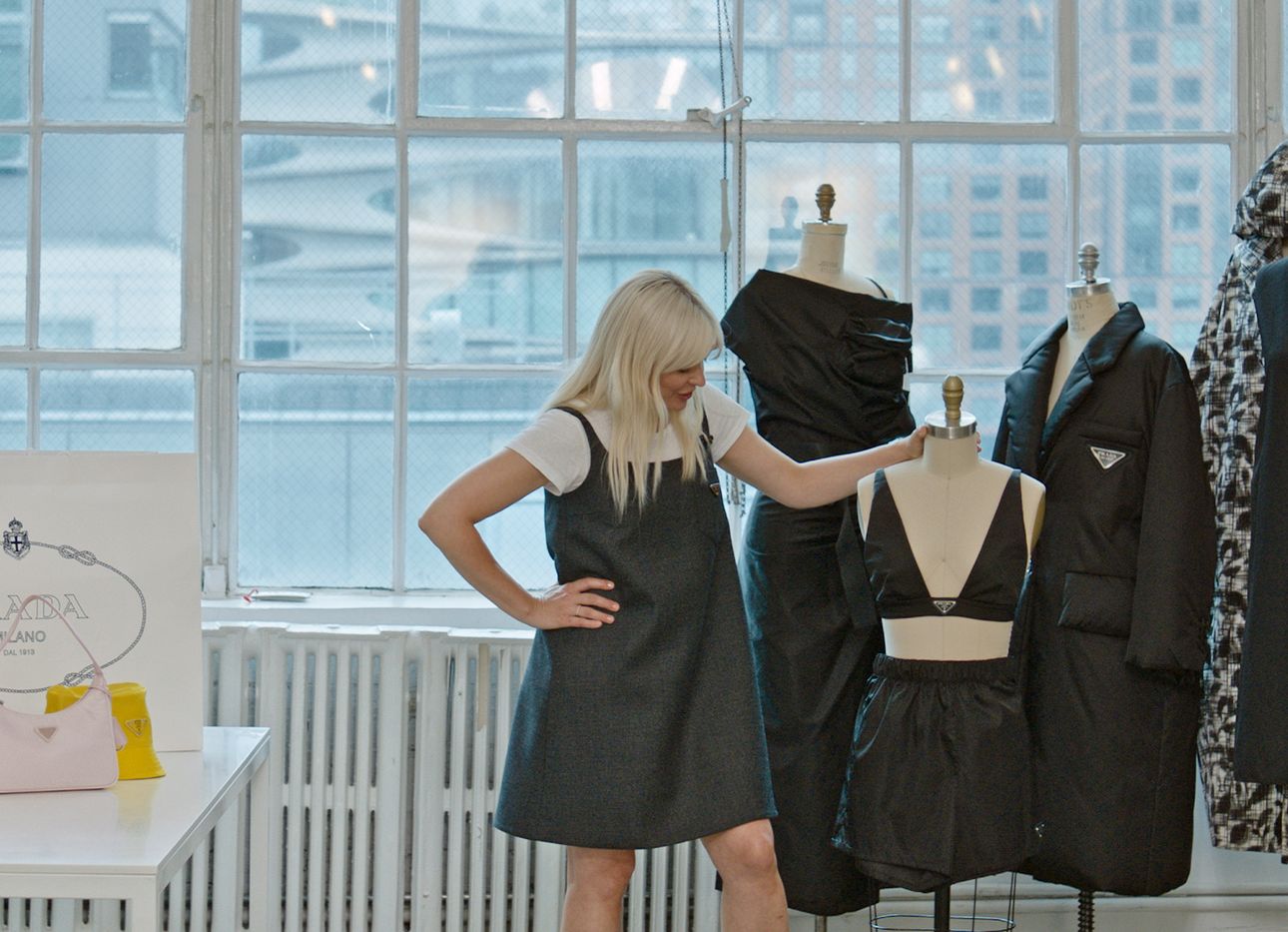
Prada’s Genre-Bending Aesthetic Codes
Can clothing be at once opulent and utilitarian, traditional and unexpected, ugly and sublime? Can it be both a statement and a question? On the latest episode of Hello Fashion, her YouTube show created with The Slowdown, stylist Kate Young explains the ways in which the Italian luxury fashion house Prada embodies each of these ostensible paradoxes.
Young begins with Miuccia Prada herself. A staunch advocate for women’s rights and, in her early years, a communist, she earned her Ph.D. in political science before deciding to go into her family’s leather goods business, and eventually into fashion. Prada’s intelligence and feminist values never wavered, remaining “at the heart of all of her clothes,” Young says.
This observation is borne out in Prada’s first ready-to-wear collection, which debuted at Milan Fashion Week in 1998. As Young explains, while high fashion at the time was defined by opulence and glamour—as exhibited by brands like Versace and Armani—Prada countered the current with its utilitarian collection inspired by workwear and uniforms. “She intentionally pushed our boundaries and made ugly clothes, used ugly colors, used ugly prints,” Young says. “This was about dressing for yourself. It was a nod to vintage. It was ‘smart girl’ clothes.”
Young further illustrates Prada’s aesthetic codes with two of the house’s best known collections. First is Young’s own favorite, spring/summer 2001 ready-to-wear, which involved graphic, colorblocked basics arranged in unusual proportions, such as a long-sleeved cropped turtleneck with a long pencil skirt or a bandeau style top with knee-length shorts. The other is Prada’s fall/winter 2013 ready-to-wear collection, which, in Young’s eyes, “explores bourgeois ideas, and what it means to be a lady, and what it means to be sexy.”
Young then discusses what has become Prada’s hallmark fabric: nylon. In the mid-to-late 20th century, luxury bags were all made of leather. Upon visiting a military grade nylon factory, however, Prada was inspired by the fabric, which was shiny, tactile, waterproof, and light, and she designed Prada’s first nylon backpack in 1984. Young notes that the backpack has been analogized to Marcel Duchamp’s fountain: Like Duchamp, who elevated the fountain (which was in fact a utilitarian, porcelain urinal) to the realm of high art, Prada took nylon, a tent fabric, and raised it to the level of a luxury good. She adds that Prada is now reissuing many of these nylon pieces, but under the commitment that, by the end of 2021, they will only use “re-nylon”—nylon made from fishing nets, discarded carpet, and cutting scraps from clothing factories.
To Young, Prada’s codes are not just concerned with colors and silhouettes. Rather, they are rooted in the conceptual, and in the individuality and boldness of their wearers: “With Prada, it’s always a question of ‘What is bourgeois? What does sexy mean?’ Through that [questioning], femininity can be expressed, it can be embraced, but through your own lens, by your own choice. There’s a power in it.”
Watch new and previous episodes of Kate Young’s YouTube show Hello Fashion at youtube.com/kateyoung.